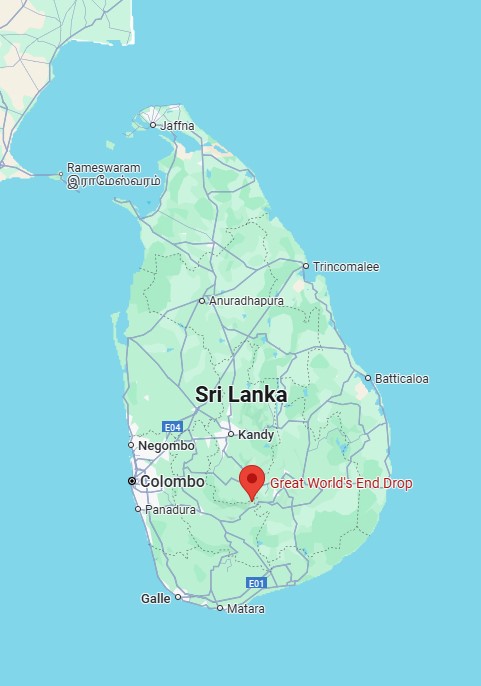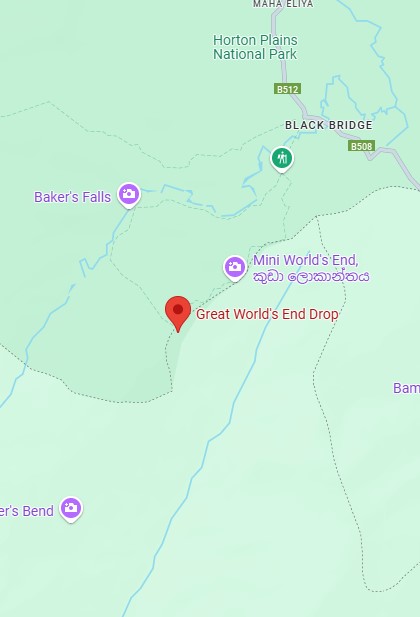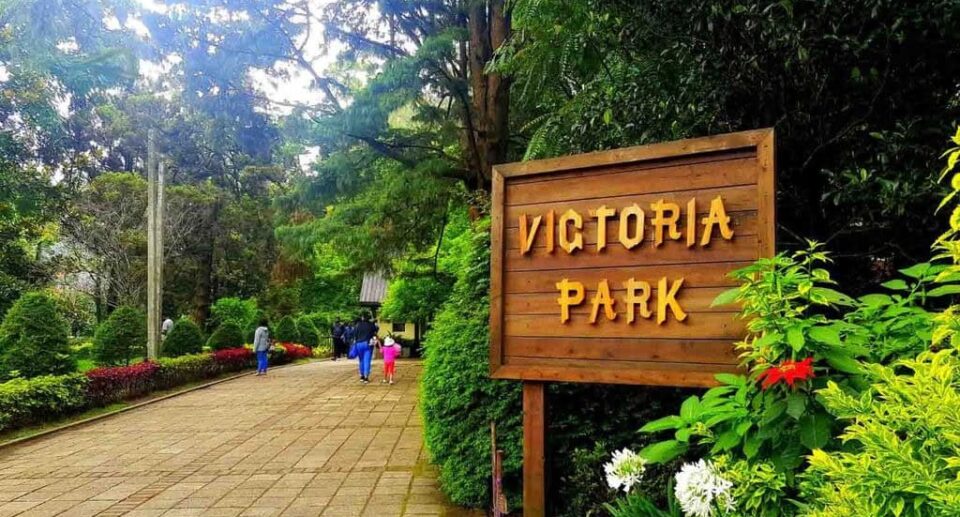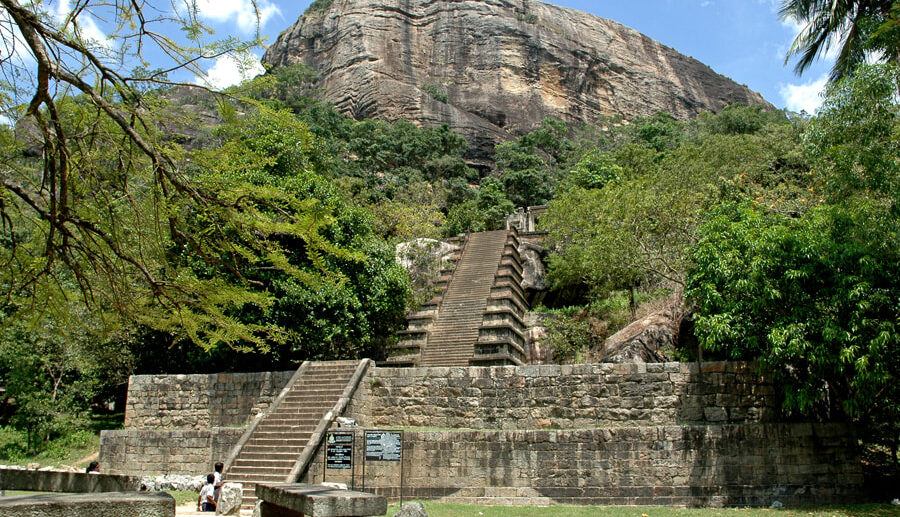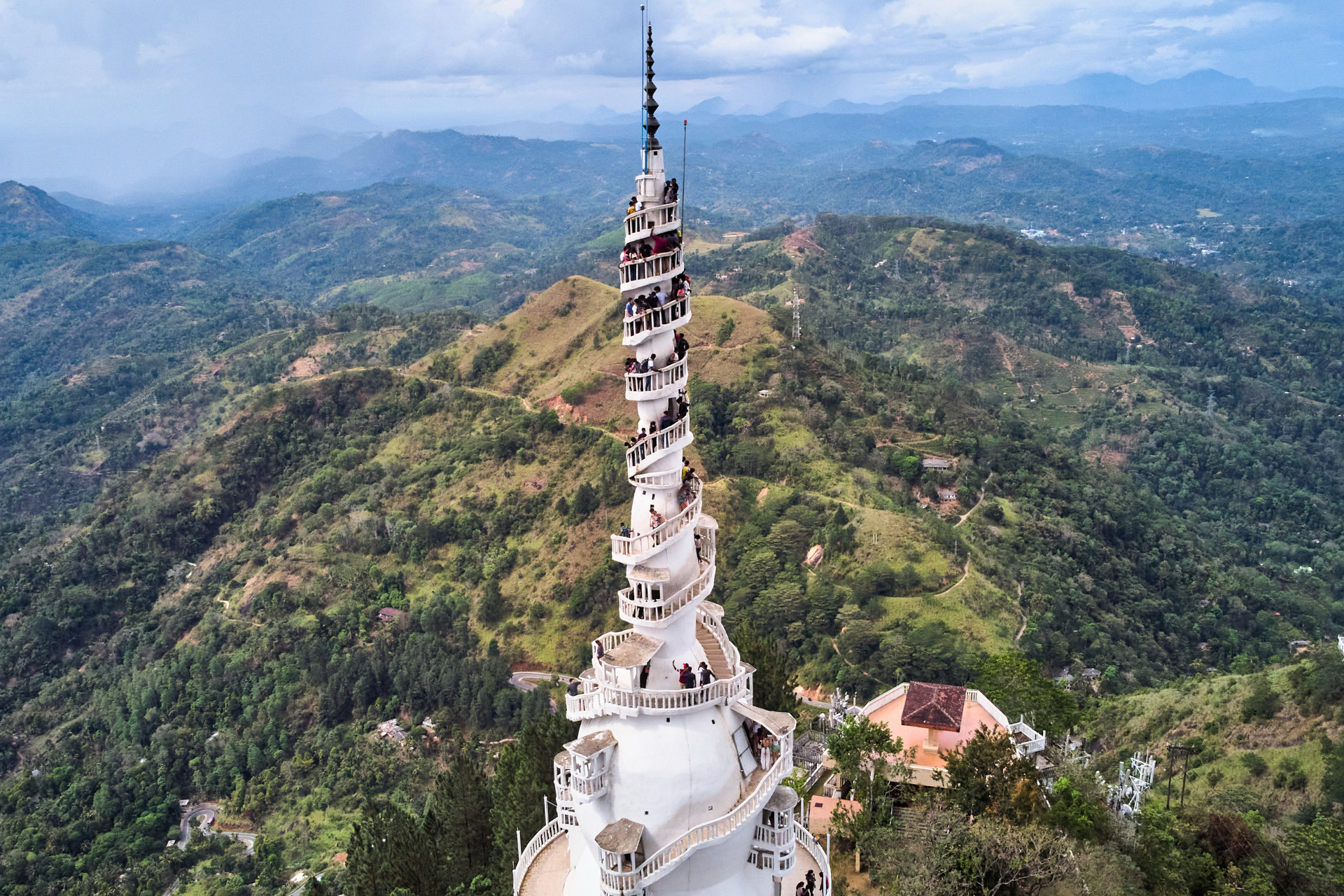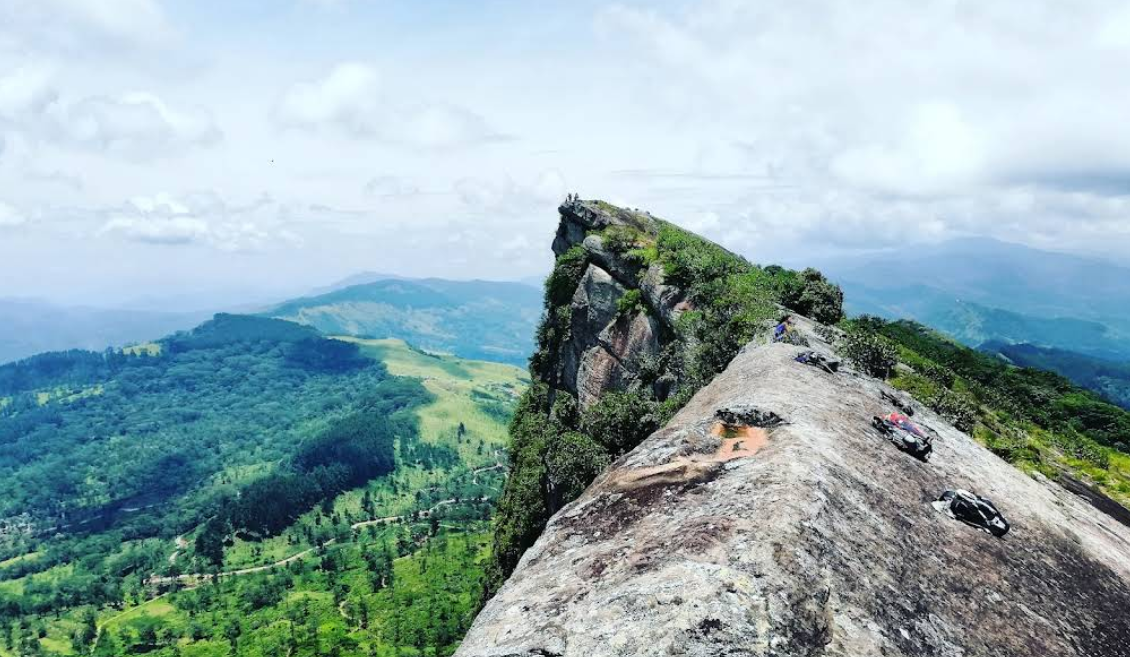World’s End, Sri Lanka: The Majestic Edge of Nature
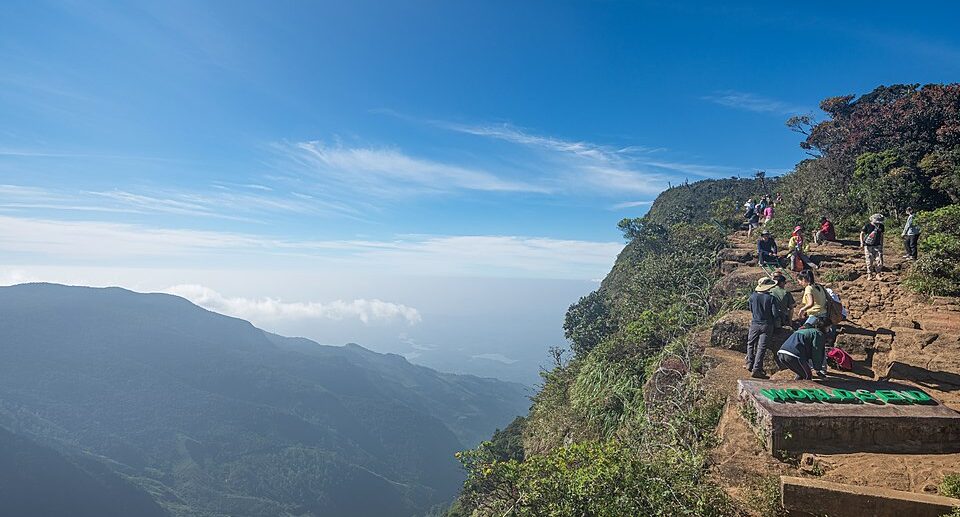
In the middle of Sri Lanka’s Central Highlands lies one of the most spectacular natural wonders of the island World’s End. Located in the Horton Plains National Park, World’s End is a sheer cliff that offers panoramic views of the surrounding valleys and plains, often described as the end of the world. This natural marvel is a pilgrimage site for visitors, nature lovers, and adventure enthusiasts. In this essay, we will explore the geography, biodiversity, cultural significance, and tourism of World’s End, and why it remains a crown jewel in Sri Lanka’s natural heritage.
Location and Geography
World’s End is situated at the southwestern edge of the Horton Plains National Park, in the central highlands of Sri Lanka. The park itself is located at an altitude of 2,100 to 2,300 meters (6,900 to 7,500 feet) above sea level, making it one of the island’s highest plateaus. The World’s End steep cliff drops nearly 870 meters (2,850 feet), creating a dramatic vertical wall that plunges into the valleys below. On a clear day, the sprawling plains of Sri Lanka’s southern lowlands are visible, stretching over 80 kilometers (50 miles) into the distance.
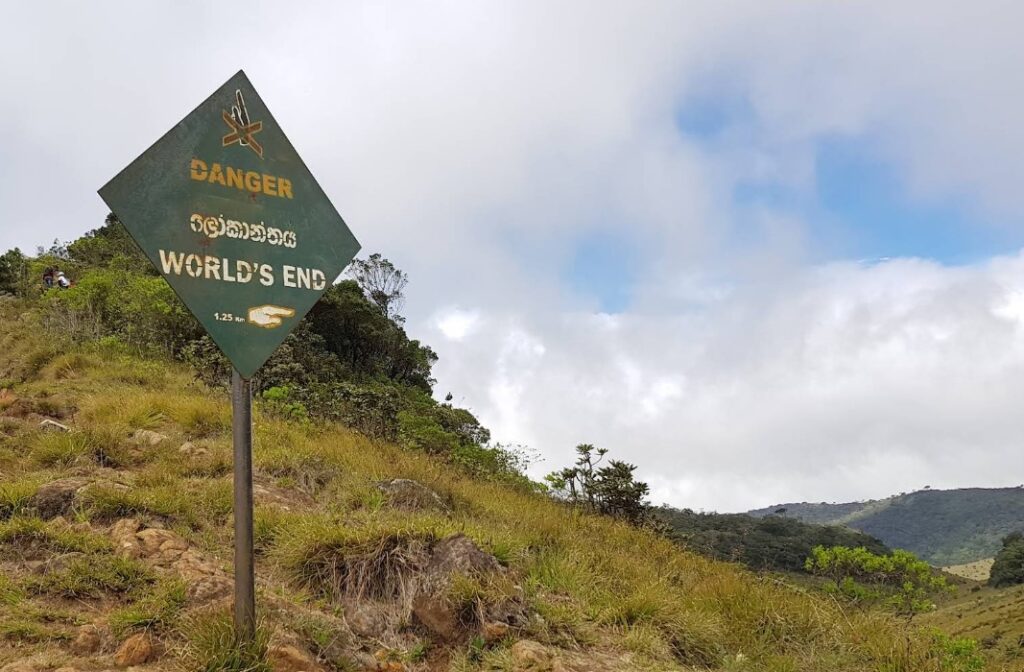
The British tea planters during colonial days coined the name “World’s End,” fascinated as they were by the sheer endless drop that marked the edge of the plateau. The site is a witness to Sri Lanka’s geological past, formed by millions of years of erosion and tectonic activity. The Horton Plains itself is a vast, open grassland scattered with cloud forests, characterized by its unique pairing of cool climate and high biodiversity.
Horton Plains National Park: The Site of World’s End
World’s End is located in Horton Plains National Park, which covers an area of about 31 square kilometers (12 square miles). The park was declared a national park in 1988 to protect its fragile ecosystem. The park is famous for its biodiversity, with several endemic species of plants and animals, including threatened birds, mammals, and plants that are exclusive to this region of Sri Lanka.
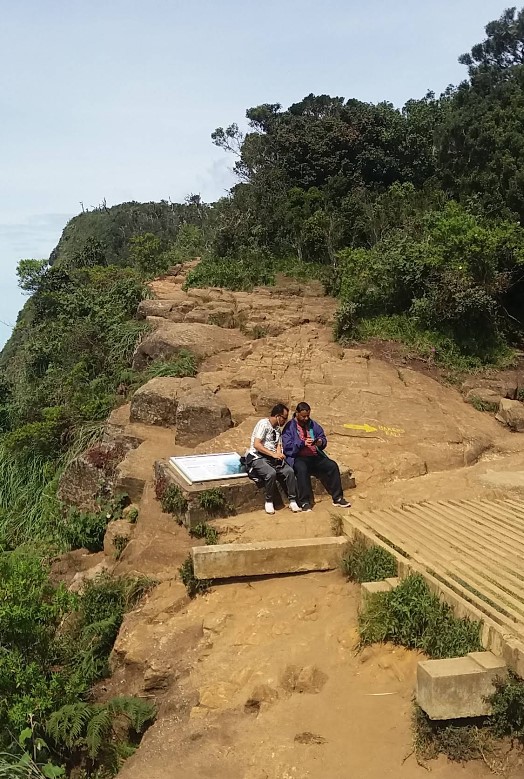

The terrain of the park consists of grasslands, montane forests, and peat bogs, all permeated with a cool, misty climate. The ecosystem is home to a variety of wildlife, such as the threatened Sri Lankan sambar deer, purple-faced langurs, and the elusive leopard. The park is a destination for birdwatchers who want to spot endemic birds like the Sri Lanka whistling thrush and the hill myna.
The Trek to World’s End
A trip to World’s End is an excursion that starts early morning to evade the mist and rain that usually roll in during the afternoons and cover the hills. The principal trekking trail commences at the visitor center in Horton Plains and winds its way through calm cloud forests and open grasslands. The trail is approximately 8 kilometers (5 miles) round-trip and takes around 3 to 4 hours at a relaxed pace
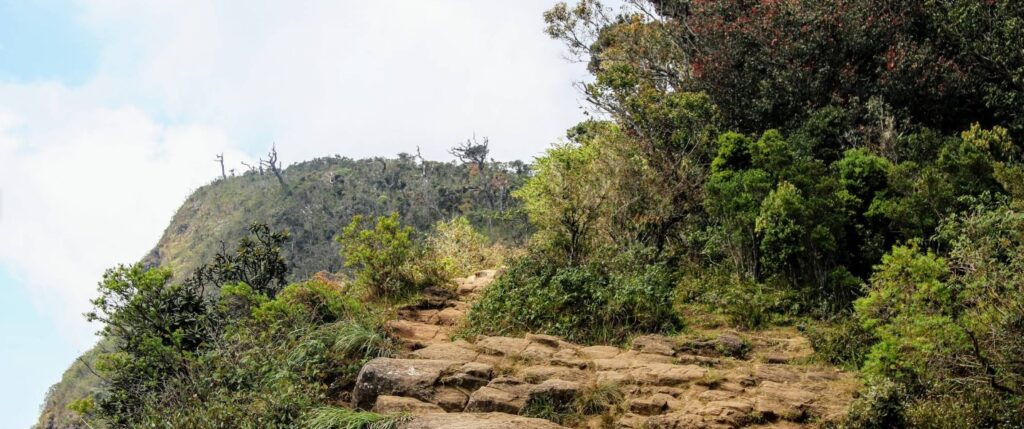
The hike to World’s End is not simply a case of turning up at the cliff face but is a walk through some of Sri Lanka’s most untouched natural environments. As hikers proceed along the path, they encounter an array of flora, orchids, and ferns, along with the occasional sighting of wildlife. The path makes its way through extremely ancient forests with moss-covered trees and reaches lookout points over rolling hills and distant peaks.
When one reaches World’s End, the feeling is normally surreal. The abrupt drop-off, as well as the breathtaking views of the surrounding plains and valleys, induces a crushing sense of awe and humbleness. One can normally hear the howling winds at the cliff’s edge and see clouds scurrying underneath like an ocean of cotton.
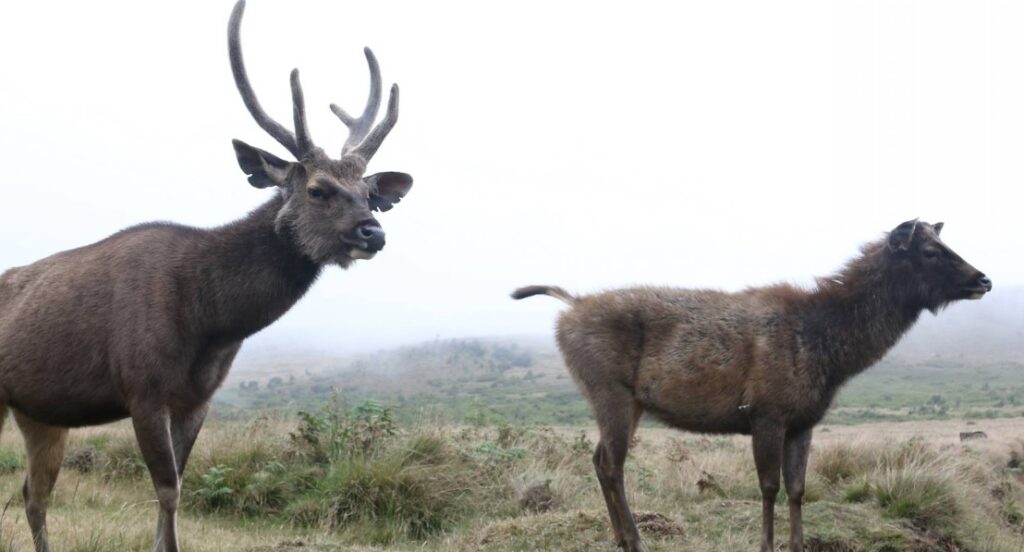
The Ecology and Conservation Significance
Horton Plains National Park and World’s End are ecologically highly significant. The park lies within the Central Highlands World Heritage Site, which has been demarcated by UNESCO owing to its unique biodiversity and unspoiled montane ecosystems. The high-altitude grasslands and forests support endemic species that have adapted to the cool climate and specific ecological conditions.
Conservation in the park focuses on protecting its fragile ecosystem from tourist pressure and alien species. The park authority manages visitor numbers and has strict guidelines in place to minimize the effect of human presence. Conservationists also closely monitor wildlife population health and plant communities, so that this natural treasure is passed on to future generations.
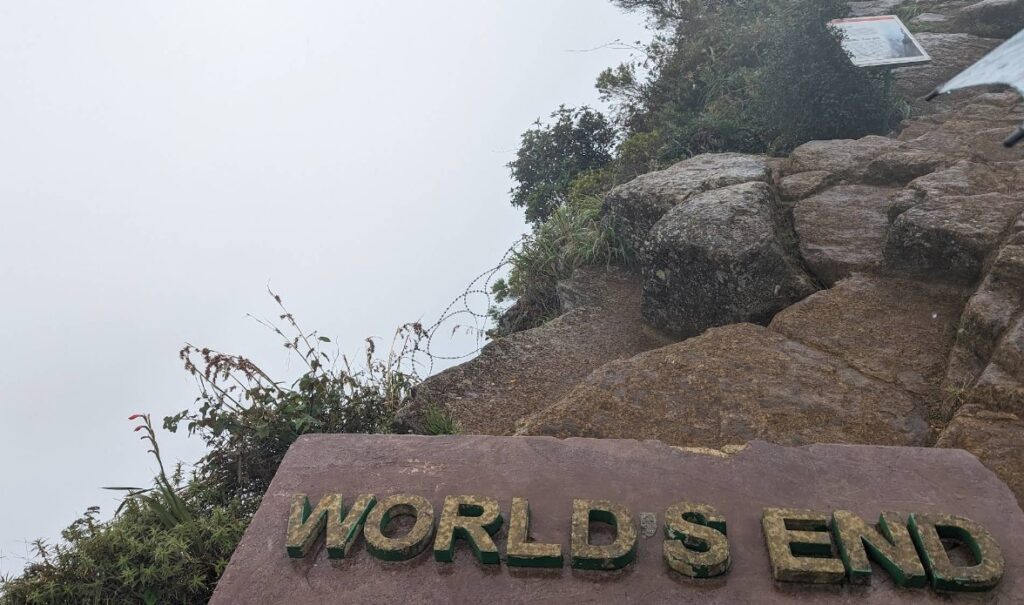
Cultural and Historical Significance
While World’s End is primarily famous for its natural beauty, it also holds cultural significance. The area around Horton Plains is believed to be the site of early human activity, with archaeological findings showing that early humans inhabited the area at some point in time. Additionally, the very name resonates with the colonial history of Sri Lanka, linking the location with the time the British colonizers discovered and mapped the island.
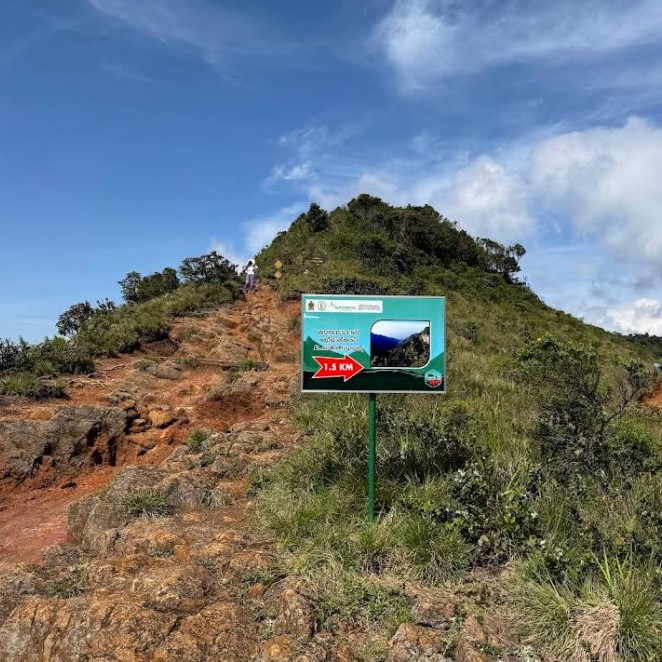
Local lore often instills World’s End with a sense of mysticism. There are myths that describe the edge as a place where the world’s secrets occur, adding to the cliff’s reputation as a natural wonder with spiritual energy.
Tourism and Visitor Experience
World’s End is a popular tourist destination in Sri Lanka, especially among foreigners and locals alike. The reasons for the popularity are that it provides a combination of stunning views, wildlife spotting, and the excitement of the trek. The best time to visit is between the dry months of January and April, when the weather is less cloudy and the trail is more accessible.
Amenities in Horton Plains consist of a visitor center that provides information about the park’s ecology, restrooms, and guided tour services. Guided treks are advisable both from the safety perspective and for learning purposes since the guides can highlight special flora and fauna and discuss the natural history of the region.
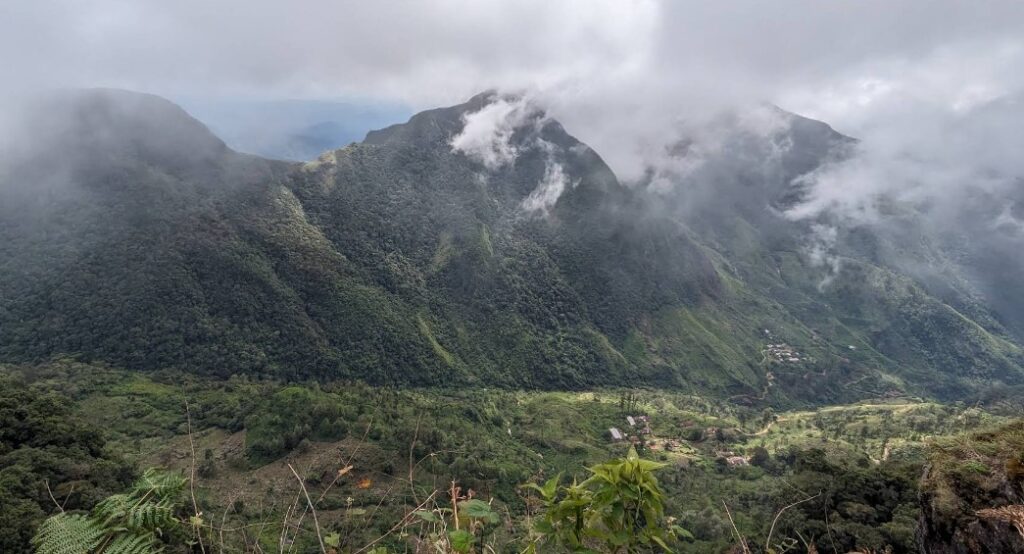
Safety first is the priority at World’s End due to the steep cliffs and unpredictable weather. Visitors are requested to stay behind safety barriers and avoid approaching the edge during wet and windy weather.
The Visual Beauty of World’s End
Photographers and nature enthusiasts have dubbed World’s End a photographer’s paradise. The way light, mist, and sweeping landscapes interact in dramatic fashion makes for vivid and memorable imagery. In the morning, the cliff is typically bathed in golden light, with clouds rolling below the drop like an endless ocean. During the day, the bright blue sky and distant mountains provide stunning backdrops.
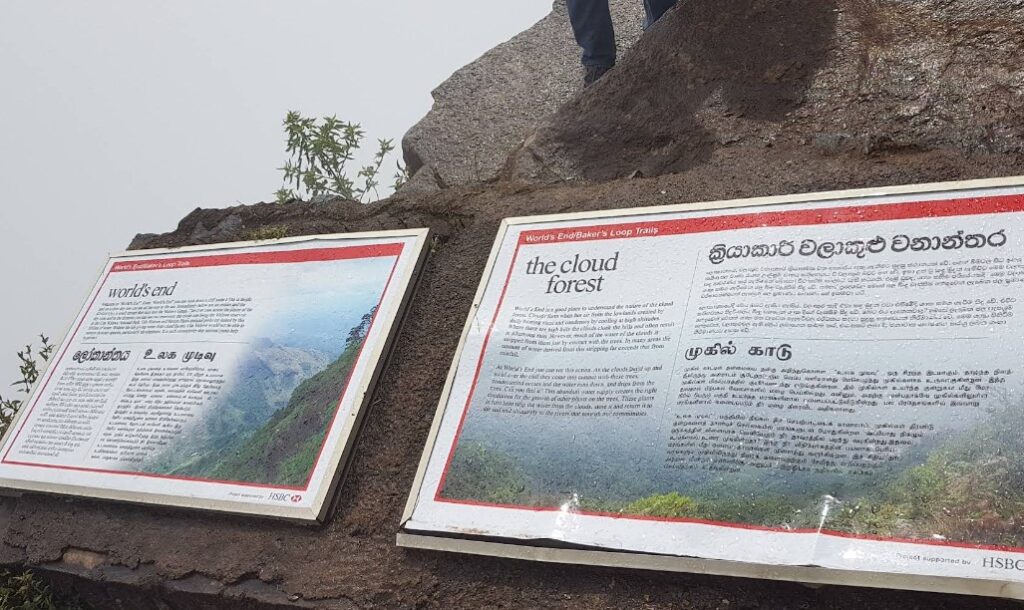
The vista from the cliff face also takes in several other landmarks, such as the Knuckles Mountain Range, the southern plains, and the Sinharaja Forest Reserve in the far distance. On the rare clear day, the horizon extends as far as the southern coast of the island, giving a true sense of standing on the edge of the world.
Challenges and Future Prospects
Despite being safeguarded, Horton Plains and World’s End are endangered by rising tourism, habitat disturbance, and climate change. The temperature changes and precipitation patterns can impact the delicate montane ecosystems. Additionally, unmanaged tourist flow can lead to soil erosion and disturbance of wildlife habitat.
To alleviate these issues, ongoing conservation initiatives focus on sustainable tourism management, environmental education, and scientific research. The involvement of the local community is also significant in the preservation of the site’s natural and cultural heritage.
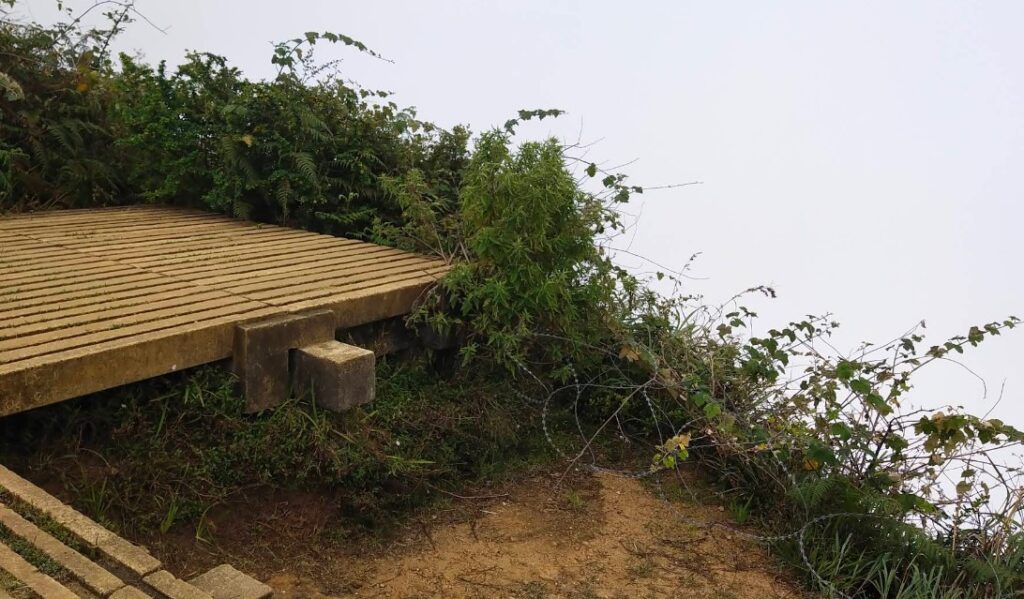
Sri Lanka’s World’s End is not a cliff but a reflection of the natural beauty and ecological richness of the island. Standing at the edge, one is awed by the overwhelming magnitude and loveliness of nature, a reminder of the earth’s ancient geological force and the fragile balance of life that persists on these heights. For visitors, World’s End offers an unforgettable experience, one that brings together physical excitement and spiritual contemplation
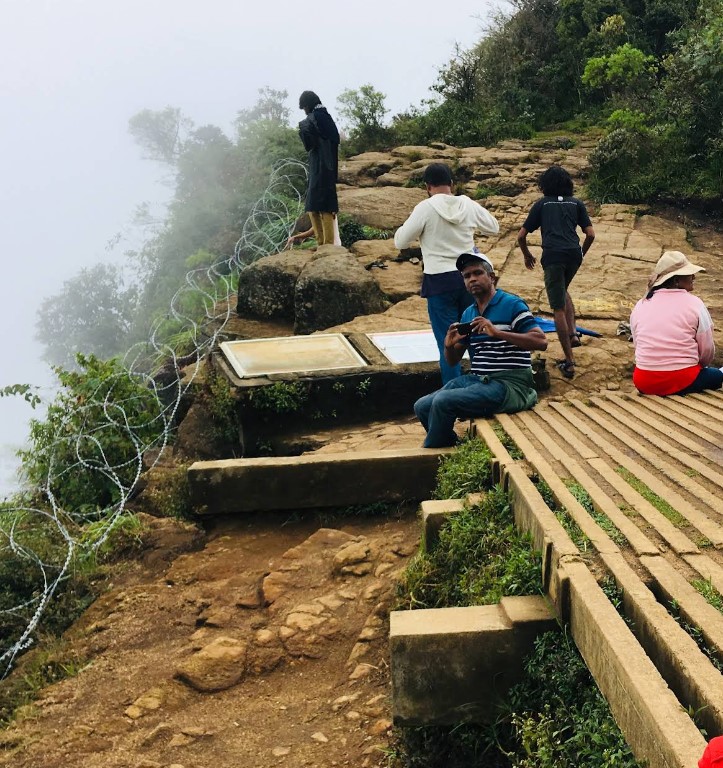
Its survival for generations to come relies on continued commitment to conservation and responsible tourism. As a gateway to Sri Lanka’s endemic nature and mountain scenery, World’s End remains a torch of the island’s commitment to nature conservation while opening its wonders to the world.
How to Go to Horton Plains and World’s End, Sri Lanka
1. Starting Point: Colombo or Kandy
Most visitors start from Colombo (the capital) or Kandy (a major city in the hill country).
Step 1: Reach Nuwara Eliya or Ohiya
Horton Plains is located near Nuwara Eliya, a popular hill station, and the closest town with accommodation and services. Another nearby town is Ohiya, a smaller village closer to the park entrance.
- From Colombo to Nuwara Eliya:
- By car/taxi: Around 5-6 hours via the A1 and A5 highways.
- By bus: You can take a bus from Colombo to Nuwara Eliya, but it is slower and less comfortable.
- By train: There’s no direct train to Nuwara Eliya, but you can take a train from Colombo to Nanu Oya station (near Nuwara Eliya) via Kandy.
- From Kandy to Nuwara Eliya:
- By car/taxi: About 2.5 to 3 hours via the scenic A5 road.
- By train: Take the train from Kandy to Nanu Oya station (near Nuwara Eliya).
- By bus: Buses run frequently but take longer and are less comfortable.
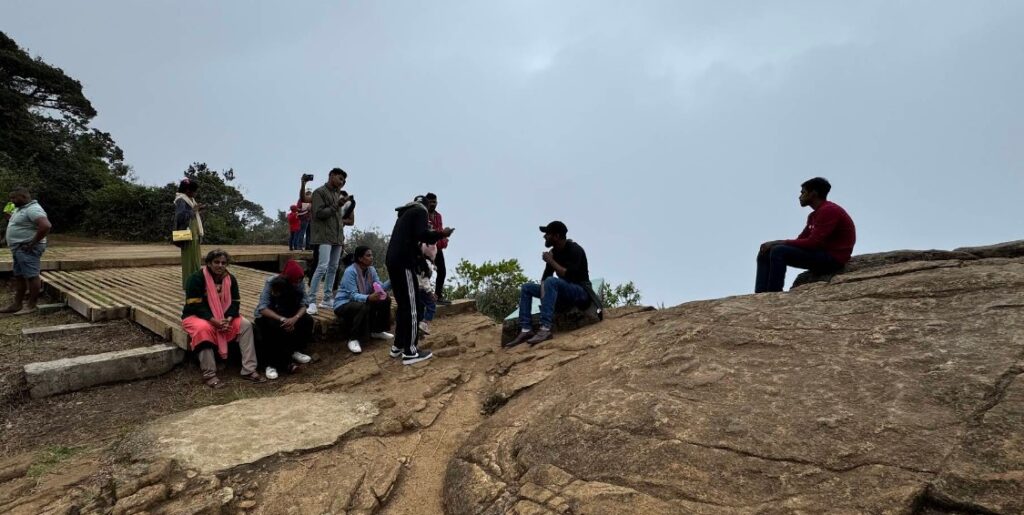
Step 2: From Nuwara Eliya or Ohiya to Horton Plains Entrance
- From Nuwara Eliya to Horton Plains Entrance:
- By car or taxi: About 30 minutes. This is the most convenient way.
- By tuk-tuk: Can also be hired for the ride.
- There is no public bus service that goes directly to the park entrance from Nuwara Eliya, so private transport is preferred.
- From Ohiya to Horton Plains Entrance:
- About 20-25 minutes by car or tuk-tuk.
- Ohiya is less touristy but closer to Horton Plains.
Step 3: Enter Horton Plains National Park
- The park entrance opens at 6:00 AM and closes around 5:30 PM.
- It’s highly recommended to arrive early (around 6:00 AM) because the best time to see World’s End with clear views is early morning before the mist rolls in.
- You will need to buy an entry ticket at the park gate. Fees differ for locals and foreign tourists.
Step 4: Trek to World’s End
- The popular trail to World’s End is about 3.5 km one way and takes around 1.5 to 2 hours to hike, depending on your pace.
- The trail is well marked and mostly flat, but wear sturdy shoes as parts can be slippery or muddy.
- Guided tours are available but not mandatory.
Summary: Quick Transport Options
| Route | Time | Transport Options |
|---|---|---|
| Colombo → Nuwara Eliya | 5-6 hours | Taxi, bus, train (to Nanu Oya) |
| Kandy → Nuwara Eliya | 2.5-3 hours | Taxi, bus, train |
| Nuwara Eliya → Horton Plains | 30 minutes | Taxi, tuk-tuk |
Additional Tips:
- Best time to visit: Early morning, between 6 AM and 9 AM, for clear skies and fewer crowds.
- Clothing: It can be chilly; bring a jacket and comfortable hiking shoes.
- Safety: Stay behind safety barriers at World’s End cliff edge.
- Food & water: Carry snacks and water; there are no shops inside the park.
- Accommodation: Nuwara Eliya has many hotels and guesthouses for overnight stays.
